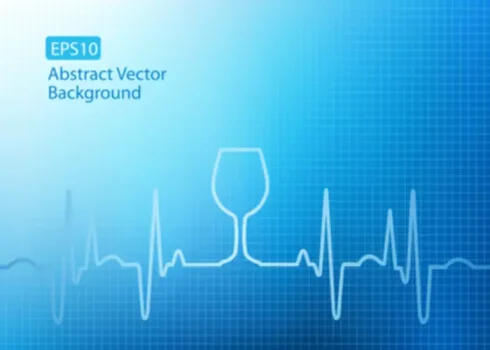
Genetics or a family history of alcohol misuse increases that risk as well. Childhood trauma, mental health issues, and stress can also lead people to begin drinking or drink more than usual. Alcohol abuse can disrupt hormone levels, which long term alcohol misuse may cause may lead to problems like infertility, erectile dysfunction, and irregular periods. If a pregnant person drinks alcohol, it can harm the developing baby, causing fetal alcohol spectrum disorders that affect their physical and cognitive growth. This shows how drinking alcohol can have a lasting impact on reproductive health throughout a person’s life. Chronic alcohol use and binge drinking damage the heart muscle, making it harder for the heart to pump blood effectively.
- In fact, sipping on liquor, wine, or beer was a top risk factor for disability and dying early for people ages 15 to 49 in 2016, leading to 2.8 million deaths globally.
- Men who choose to drink should limit themselves to two drinks per day, while women who choose to drink should limit themselves to one drink per day.
- In terms of stroke subtypes, compared with nondrinkers, current alcohol drinkers have an increased risk (~14 percent) for hemorrhagic stroke (Ronksley et al. 2011).
- The effects of alcohol can range from mild, such as skin flushing, to more severe symptoms such as passing out or vomiting.
- That means that within four to five hours, half of all the alcohol consumed has been expelled from the body.
Increased Risk of Blood or Brain Disease

The risk of developing breast cancer for a woman who drinks once per week is ~11%. But that goes up to 13% for women who have one drink a day, and 15% for women who have two. As a general rule, most people will clear out one drink (like a quickly consumed shot) in two hours or less. But if a person is binge drinking, plowing through four or five drinks within a couple of hours, it’s going to take about six to seven hours for the football-sized liver to metabolize that alcohol. Acetaldehyde is “very toxic to a lot of different tissues,” says Dr. Sarah Wakeman, senior medical director for substance-use disorder at Mass General Brigham.

Deaths from excessive alcohol use
- We know that alcohol is bad for our brains and bodies in numerous ways, especially in large amounts, and the days of alcohol being seen as a part of a healthy diet are over.
- Firstly, unhealthy drinking habits can lower dopamine levels and decrease endorphins over time.
- Alcohol addiction, or alcohol use disorder, is a complex and chronic brain disorder characterized by compulsive alcohol use, loss of control over drinking, and an intense craving for alcohol despite negative consequences.
- “People have a right to know what the negative impacts of a substance they’re ingesting could have on their health.
- Some people might drink rubbing alcohol believe it is ok, the results of this can be very bad.
Anyone who imbibes at a faster pace will be exposed to the substance’s potential harms. Rehab insurance is a type of health insurance that covers the cost of addiction treatment, including inpatient and outpatient rehab programs, counseling sessions, and medication-assisted treatment. Most insurance providers offer some form of rehab insurance, either as part of their standard coverage or as an add-on policy. Using the latest programs and techniques, we aim to provide you with a compassionate path toward achieving and maintaining sobriety for the long term. Your well-being is our priority, and we are here to help you every step of the way.

Potential Biologic MechanismsUnderlying Alcohol-Induced BP Effects
As noted above, chronic alcohol exposure leads to a decrease in mTOR activity, which corresponds to increased markers of autophagy (Lang and Korzick 2014). The autophagy pathway also is rapidly upregulated during ATP depletion, mitochondrial dysfunction, and oxidative stress. Ethanol-mediated increases in autophagy therefore may be an important mechanism underlying the adverse myocardial effects of ethanol.
Other risks
It is expressed as the weight of ethanol in grams per 100 milliliter (ml) of blood. Within minutes of consuming alcohol, it is absorbed into the bloodstream by blood vessels in the stomach lining and small intestine. For instance, if you’re struggling with cravings, your doctor can prescribe medications, like naltrexone and acamprosate (and others), which may help reduce those cravings,” she says.
How Alcohol Affects your Musculoskeletal and Nervous System
Additionally, drinking alcohol can put a dent in a person’s nutrition, preventing the body from absorbing folic acid, which is critical to all our cells. It can also block the uptake of important nutrients like B12 and zinc. Steatotic liver disease develops in about 90% of people who drink more than 1.5 to 2 ounces of alcohol per day. Tolerance and dependence can both happen as symptoms of alcohol use disorder, a mental health condition previously referred to as alcoholism, that happens when your body becomes dependent on alcohol. This condition can be mild, moderate, or severe, depending on the number of symptoms you have. The pancreas normally releases insulin, which helps the body respond to high blood sugar.
More contemporary studies have not found evidence of mitochondrial injury in biopsy samples from long-term alcohol drinkers (Miró et al. 2000). Differences among https://ecosoberhouse.com/ results from human studies may relate to small sample sizes, duration of drinking, and degree of myocardial dysfunction. In the Miró study, alcohol drinkers also had been receiving pharmacologic treatments such as beta-adrenergic blocking agents that reduce blood pressure and also may have antioxidant effects.
Alcohol Consumption and CHD
Not drinking has “had positive impacts in what feels like Sober living house all aspects of my life,” she says. Genetics, alcohol tolerance, and the amount of alcohol consumed all affect the time it takes for alcohol to be processed in the body. Other ethanol-induced changes may be related to enzymes that modulate protein synthesis and/or breakdown (e.g., ubiquitine-ligases). MTOR regulates cell growth, proliferation, motility, and survival; protein synthesis; and transcription (Donohue 2009). Decreases in mTOR activation may play a role in reduced myocardial protein synthesis, ventricular wall thinning, and dilation.
Alcohol and cancer: A growing concern
This can result in ongoing feelings of sadness, hopelessness, and discomfort. If facing challenges, don’t hesitate to connect with trusted adults, counselors, or support groups. Taking that brave step for help can lead you to a brighter, healthier future. This form of arthritis results from painful buildup of uric acid in the joints.
دیدگاه شما